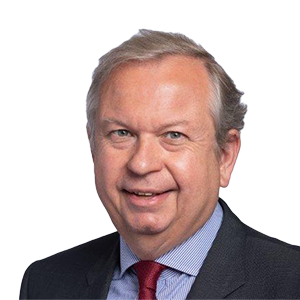On November 28, 2023, the European Commission (EC) adopted its first list of Projects of Common Interest (PCIs), i.e., projects within the EU territory, and Projects of Mutual Interest (PMIs), i.e., projects connecting the EU with other countries, including 166 projects implementing the European Green Deal. The list was published in the EU Official Journal on April 8, 2024.
On July 15, 2024, Directive (EU) 2024/1788 establishing common rules for the internal markets in renewable and natural gases and in hydrogen (Directive) was published in the EU Official Journal. The Directive is intended to drive use of renewable and low-carbon gases, supporting the EU’s goal of climate neutrality by 2050. It is part of the broader hydrogen and decarbonised gas markets package which aims to create a regulatory framework for dedicated hydrogen infrastructure and markets and integrated network planning in the EU.
1. EU cross-border projects
The EC’s list of PCIs and PMIs includes 166 projects, 65 hydrogen and electrolyser projects, and 14 carbon capture and storage (CCS). In short, the 14 CCS projects relate to: (i) CO2 networks between (a) the Netherlands, Belgium, and North Sea ports, (b) Benelux, Germany, Denmark and Norway, and (c) countries along the Rhine Corridor; (ii) transport and storage infrastructure in Croatia, Denmark, France, Greece, Hungary, Norway, the Netherlands, and the UK; (iii) hubs in the Mediterranean; and (iv) transport between Latvia and Lithuania.
As PCIs and PMIs, these projects will benefit from:
- priority status and streamlined permitting procedures (a binding three-and-a-half year time limit);
- improved, faster and streamlined environmental assessments;
- a single national competent authority (one-stop-shop) coordinating all permitting procedures and specific points of contact for offshore grid projects;
- a procedure enabling allocation of investment (construction) costs among Member States benefiting from a PCI project; and
- eligibility for financial assistance under the Connecting Europe Facility (CEF) in the form of grants, and the ability to access funds under other EU programmes, including InvestEU and the Recovery and Resilience Facility (RFF).
This list was submitted on November 28, 2023 to the European Parliament and the Council for their scrutiny and was published on April 8, 2024. Following adoption of this list of projects, the EC is working with project promoters and Member States to support rapid implementation of these projects, in line with the enhanced measures also proposed on November 28, 2023 in the EU Action Plan for Grids.
2. Scope of the Directive
The Directive sets out common rules for the transmission, distribution, supply, and storage of gases, and the rules for the transport, supply and storage of hydrogen. Rules (including technical rules) on market design aim to remove certain regulatory impediments and streamline other regulation, ensuring competitive, consumer-centred, flexible and non-discriminatory markets for gas (including hydrogen). These goals are reflected in provisions addressing, amongst other things:
- Certification of operators of renewable and low-carbon gases, natural gas and hydrogen systems. These provisions fill the gap in the current certification system for low carbon fuels and gases, and enable the deployment of hydrogen as an independent energy carrier via dedicated hydrogen networks (not currently addressed by the regulatory framework). The EC consulted on draft rules on the methodology for assessing greenhouse gas emissions savings from low-carbon fuels in October 2024. The rules are expected to be adopted at the beginning of 2025 and should be in place by August 5, 2025.
- Market access including provisions addressing choice of supplier, market-based prices, and public service obligations. These provisions are intended to facilitate competition, to reduce concentration in retail gas markets and enable new entry and innovation. To the same end, the Directive sets out rules facilitating third-party access to natural gas and hydrogen infrastructure, and addressing refusals to provide access (including connections).
In addition, the Directive sets out consumer rights, covering basic contractual rights, switching rights and fees, rules on comparison tools, citizen energy communities, billing, smart and conventional metering, data management, out-of-court dispute settlement, and vulnerable customers.
The Directive also sets out rules applicable to transmission, storage and system operators of natural gas (including LNG), distribution system operators (DSOs) of natural gas (including closed distribution systems), and combined operators. These rules cover the obligations (including confidentiality) of such operators. In relation to DSOs, it sets out their rights regarding connection of new production facilities for renewable and low-carbon gases to the distribution system, and requires unbundling of DSOs. The Directive also requires unbundling of transmission system operators (TSOs), addressing ownership unbundling, independent system operators, independent TSOs, unbundling of dedicated hydrogen network operators, and unbundling and transparency of accounts. The Council and European Parliament amended the original EC proposal for the Directive to require unbundling of TSOs and DSOs for hydrogen. The EC has been mandated to develop guidelines to ensure full and effective compliance of the transmission system or hydrogen transmission network owner and of the natural gas storage system operator or hydrogen storage operator with the rules on their independence.
In further provisions relating to hydrogen, the Directive sets out rules applicable to dedicated hydrogen networks, including existing hydrogen networks, geographically confined hydrogen networks, and interconnectors with ex-EEA countries. It addresses the rights and obligations of hydrogen network, storage and terminal operators. These provisions fill the gap in the current EU rules covering dedicated hydrogen networks regarding tariff-based investments in networks, ownership and operation, and harmonization regarding (pure) hydrogen quality. In relation to hydrogen networks more broadly, the Directive contains rules on integrated network planning, including network development and investment decisions, hydrogen network development reporting, and financing of cross-border hydrogen infrastructure. These provisions are intended to address the current differences between the EU-wide ten-year network development plan and national network development plans.
In addition, the Directive contains provisions on national regulatory authorities, addressing important issues including independence, duties and powers, and provides regimes for cross-border issues, and a consultation procedure for network codes and regulatory guidelines. The EC has a number of mandates to adopt detailed rules on cooperation between national authorities and the Agency for the Cooperation of Energy Regulators and record-keeping requirements.
Finally, the Directive provides for Member States taking proportionate, non-discriminatory and transparent measures to ensure a level playing field, and for notification of technical agreements between a Member State and a third country concluded by TSOs, hydrogen network operators or other operators.
3. Next steps
In terms of next steps, the Directive will need to be transposed in national law of the Member States. The Member States have until August 5, 2026 to transpose the Directive, meaning that the rules will become applicable from that date.







